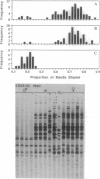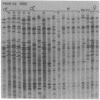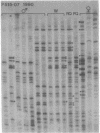Abstract
Demonstrating the importance of haplodiploidy in the evolution of eusociality among the Hymenoptera (bees, wasps, and ants) requires estimation of four parameters: relatedness between cooperating individuals, effective mating frequency, sex ratio, and rates of worker reproduction. Multilocus DNA fingerprinting techniques permitted the precise determination of these parameters for the primitively eusocial bee Augochlorella striata (Halictidae). DNA fingerprints revealed an unprecedented resolution of genetic relationships within colonies, detecting factors such as intraspecific nest parasitism and diploid males that confounded estimates of relatedness and sex ratio, respectively. Parameter estimates (i) corroborate recent evidence for queen-worker conflict over the sex ratio and (ii) implicate the role of haplodiploidy in the evolution of worker behavior.
Full text
PDF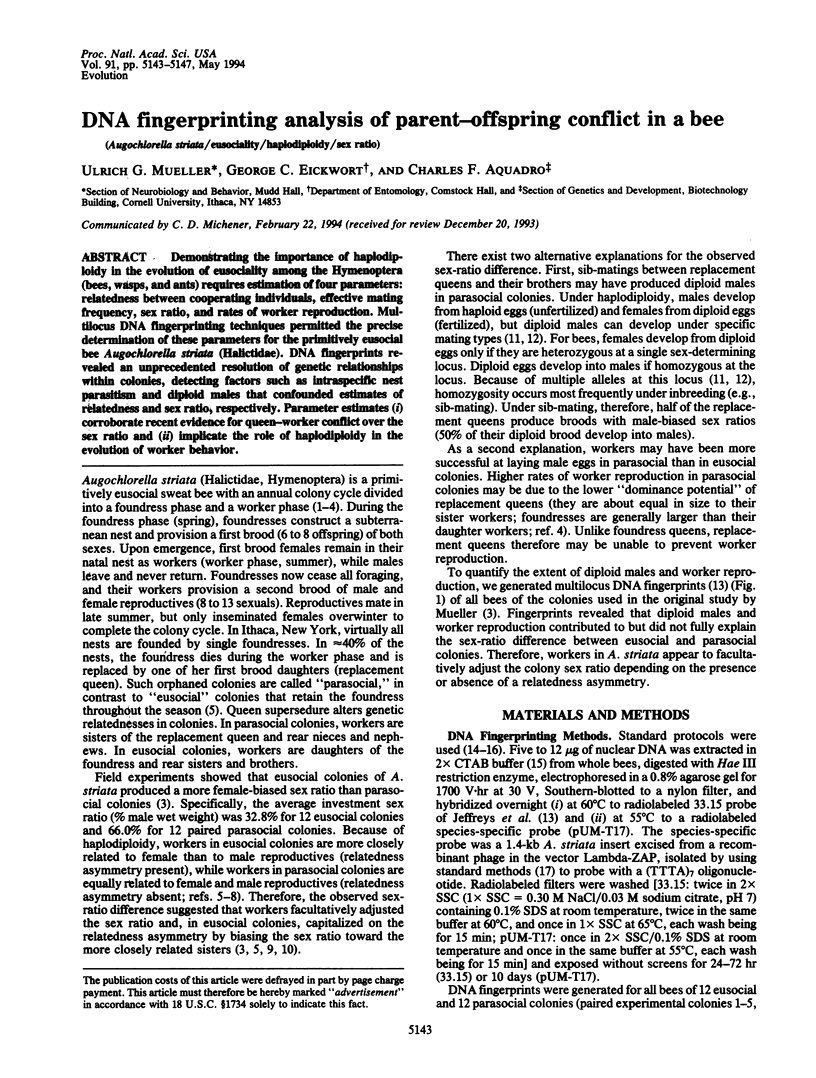
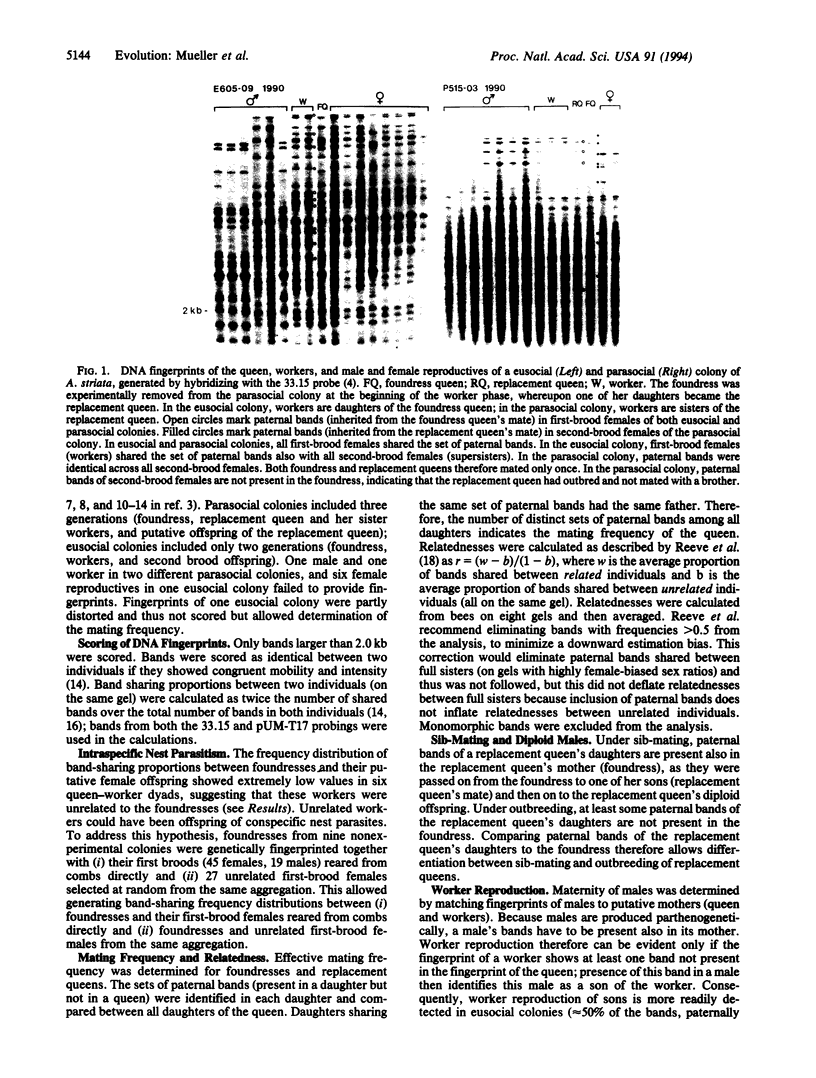
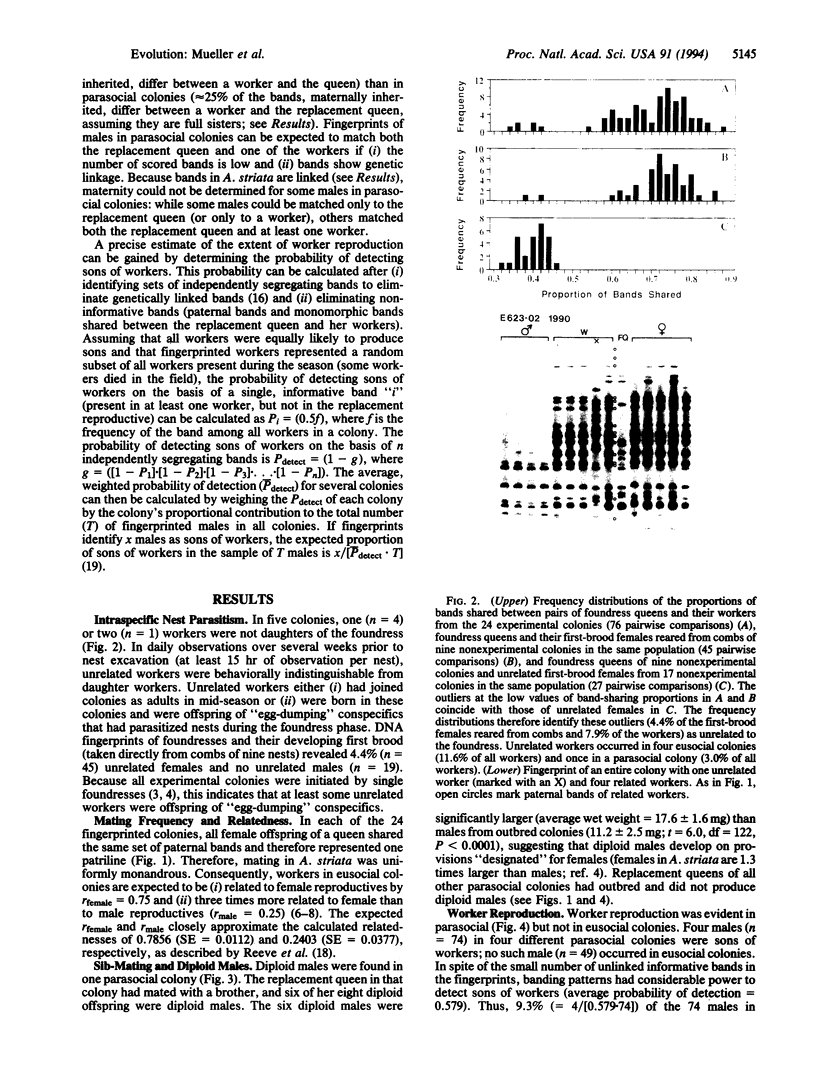
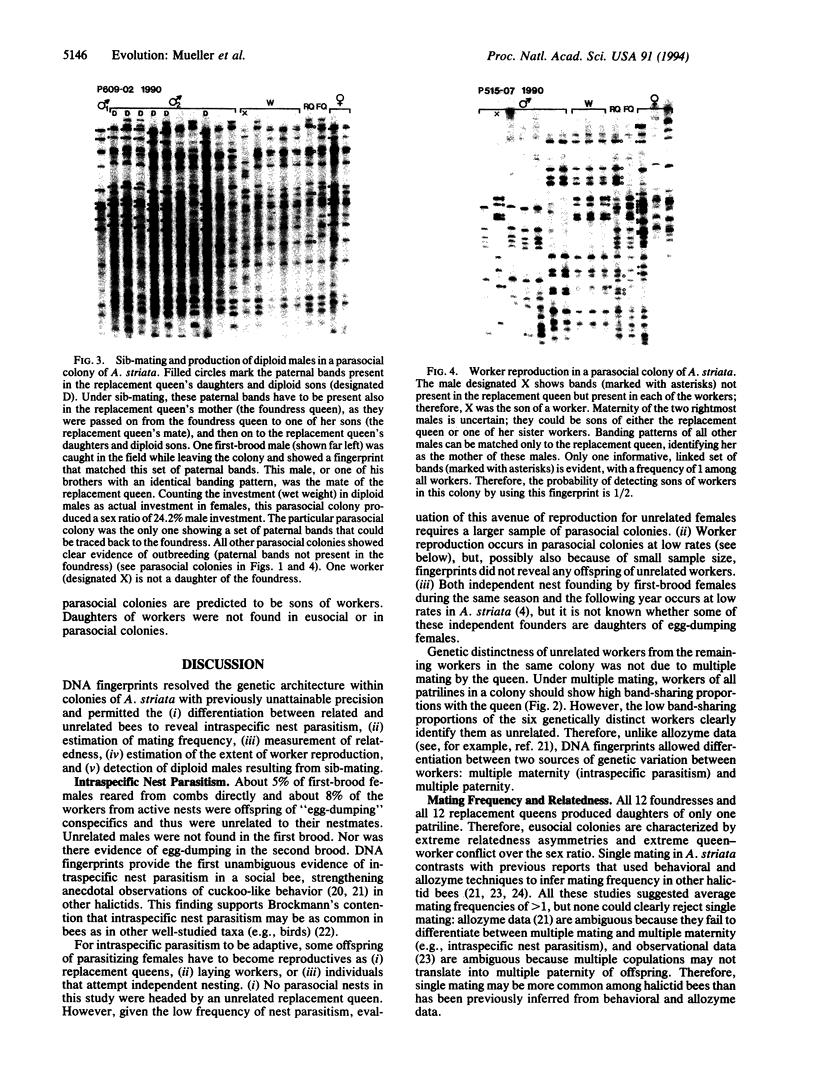
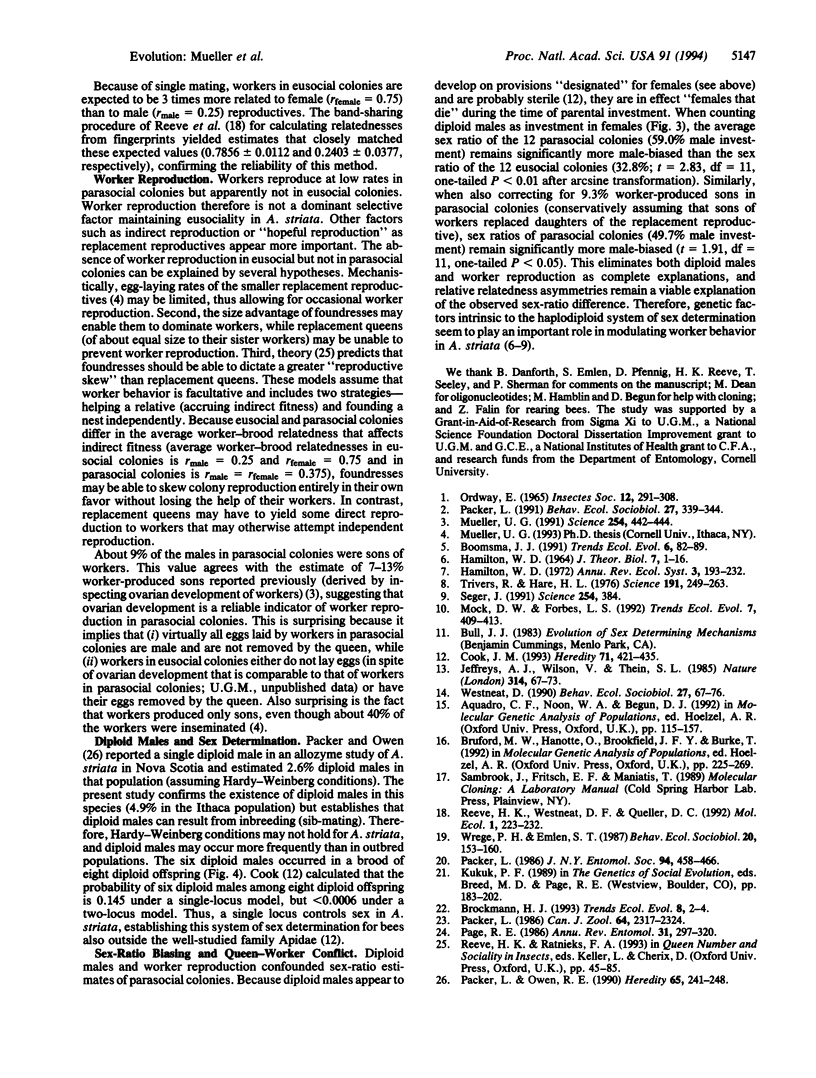
Images in this article
Selected References
These references are in PubMed. This may not be the complete list of references from this article.
- Hamilton W. D. The genetical evolution of social behaviour. I. J Theor Biol. 1964 Jul;7(1):1–16. doi: 10.1016/0022-5193(64)90038-4. [DOI] [PubMed] [Google Scholar]
- Jeffreys A. J., Wilson V., Thein S. L. Hypervariable 'minisatellite' regions in human DNA. Nature. 1985 Mar 7;314(6006):67–73. doi: 10.1038/314067a0. [DOI] [PubMed] [Google Scholar]
- Mueller U. G. Haplodiploidy and the evolution of facultative sex ratios in a primitively eusocial bee. Science. 1991 Oct 18;254(5030):442–444. doi: 10.1126/science.254.5030.442. [DOI] [PubMed] [Google Scholar]
- Seger J. Relatedness, sex ratios, and controls. Science. 1991 Oct 18;254(5030):384–384. doi: 10.1126/science.254.5030.384. [DOI] [PubMed] [Google Scholar]
- Trivers R. L., Hare H. Haploidploidy and the evolution of the social insect. Science. 1976 Jan 23;191(4224):249–263. doi: 10.1126/science.1108197. [DOI] [PubMed] [Google Scholar]




